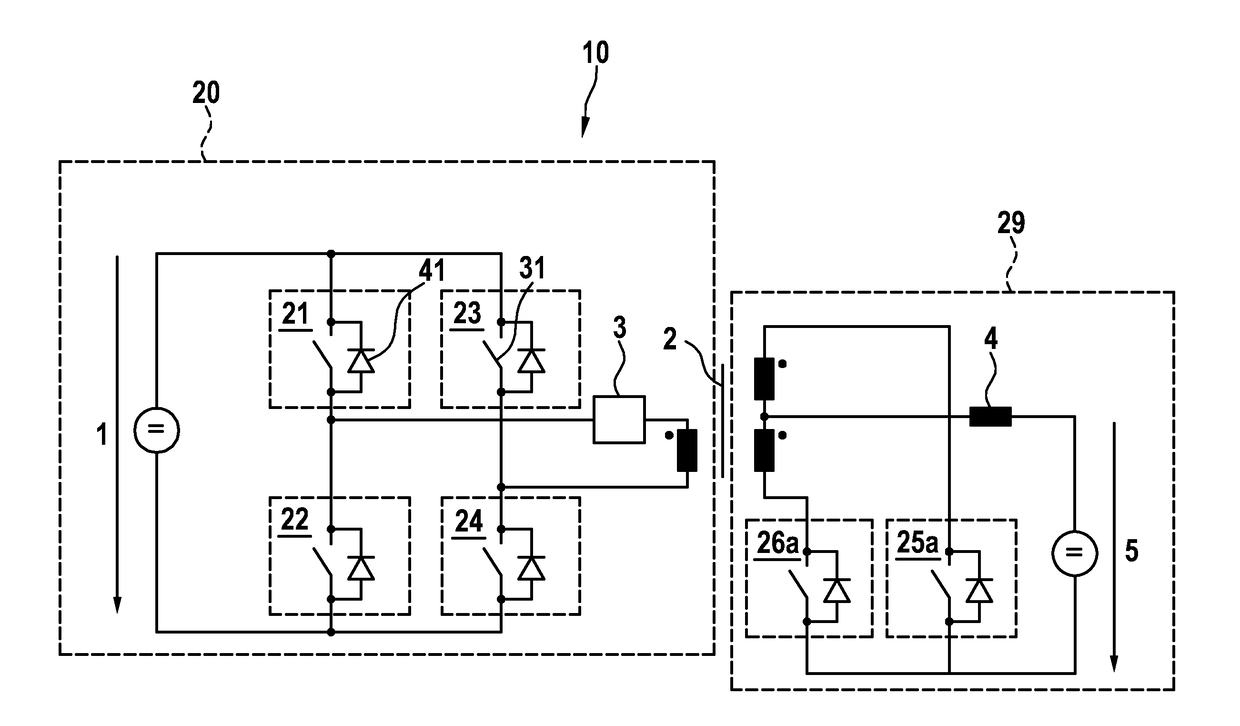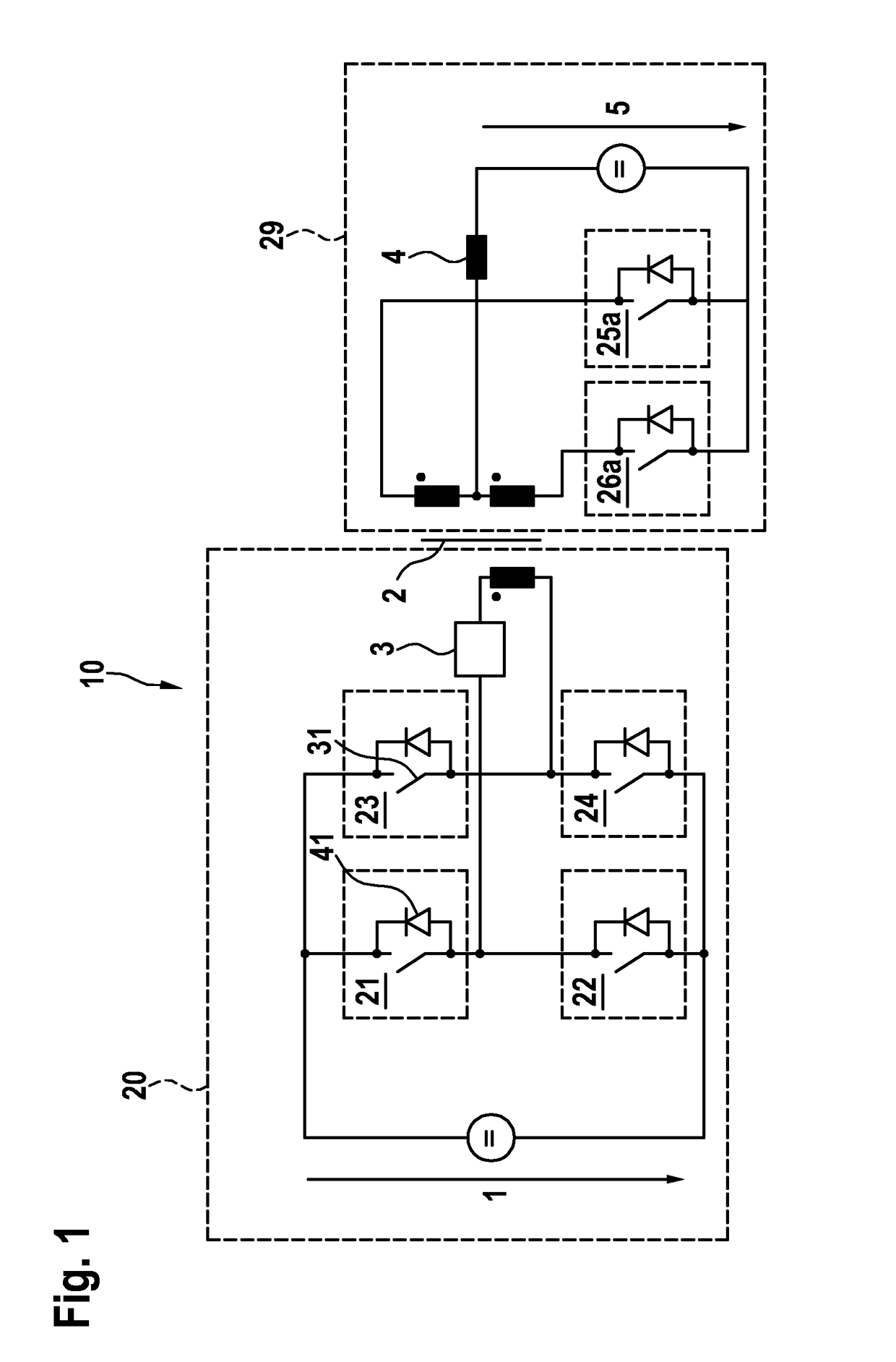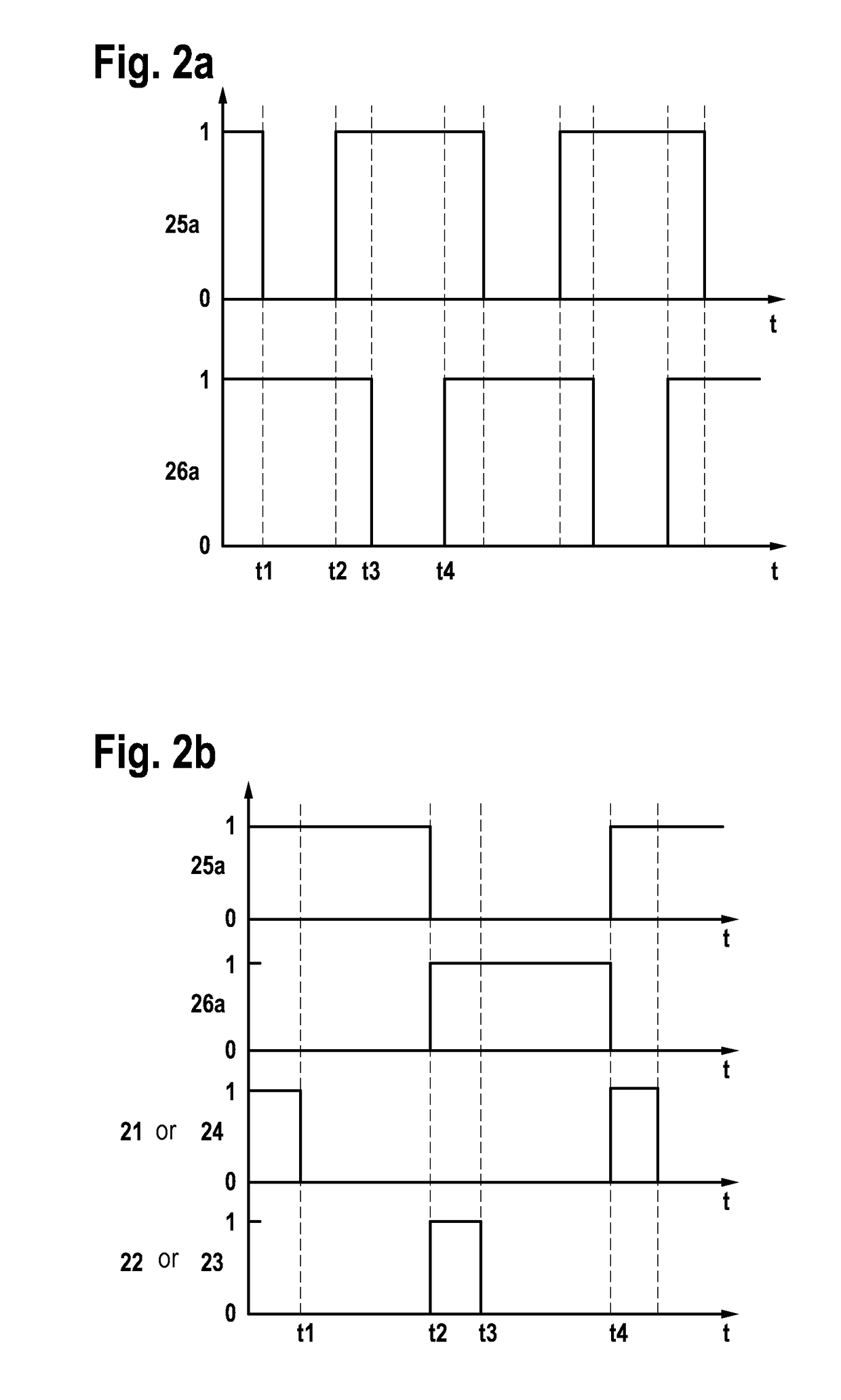Modulation method for the boost converter operating mode of a push-pull converter
- Summary
- Abstract
- Description
- Claims
- Application Information
AI Technical Summary
Benefits of technology
Problems solved by technology
Method used
Image
Examples
Embodiment Construction
[0021]In the figures of the drawings, identical reference signs denote identical or functionally identical elements.
[0022]FIG. 1 shows a schematic depiction of an exemplary bidirectional push-pull converter.
[0023]In FIG. 1, the reference sign 10 denotes the push-pull converter. A full-bridge circuit comprising switching devices 21, 22, 23, 24 can be implemented here in a high-voltage-side circuit 20. A low-voltage-side circuit 29 is designed as a center-tap connection comprising switching devices 25a, 26a as well as a throttle 4. The high-voltage-side circuit 20 and the low-voltage-side circuit 29 are furthermore connected to one another in a galvanically isolating manner by means of a transformer 2. A current sensor device 3 is located within the high-voltage-side circuit, said current sensor device being designed to measure the current through the transformer 2. The switching devices 21, 22, 23, 24, 25a, 26a each comprise a transistor 31 and a diode 41. A DC voltage 1 can be appli...
PUM
 Login to View More
Login to View More Abstract
Description
Claims
Application Information
 Login to View More
Login to View More - R&D
- Intellectual Property
- Life Sciences
- Materials
- Tech Scout
- Unparalleled Data Quality
- Higher Quality Content
- 60% Fewer Hallucinations
Browse by: Latest US Patents, China's latest patents, Technical Efficacy Thesaurus, Application Domain, Technology Topic, Popular Technical Reports.
© 2025 PatSnap. All rights reserved.Legal|Privacy policy|Modern Slavery Act Transparency Statement|Sitemap|About US| Contact US: help@patsnap.com



